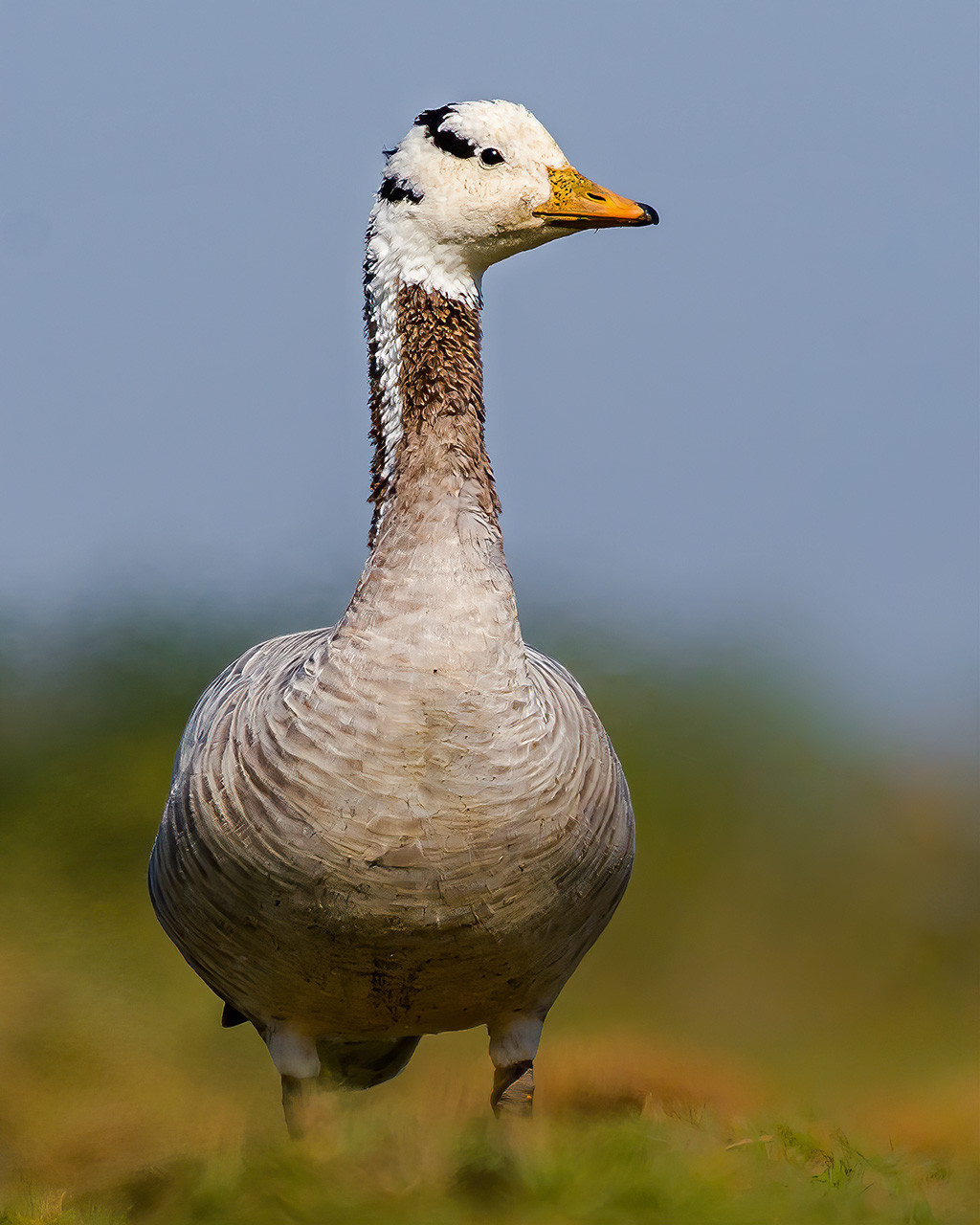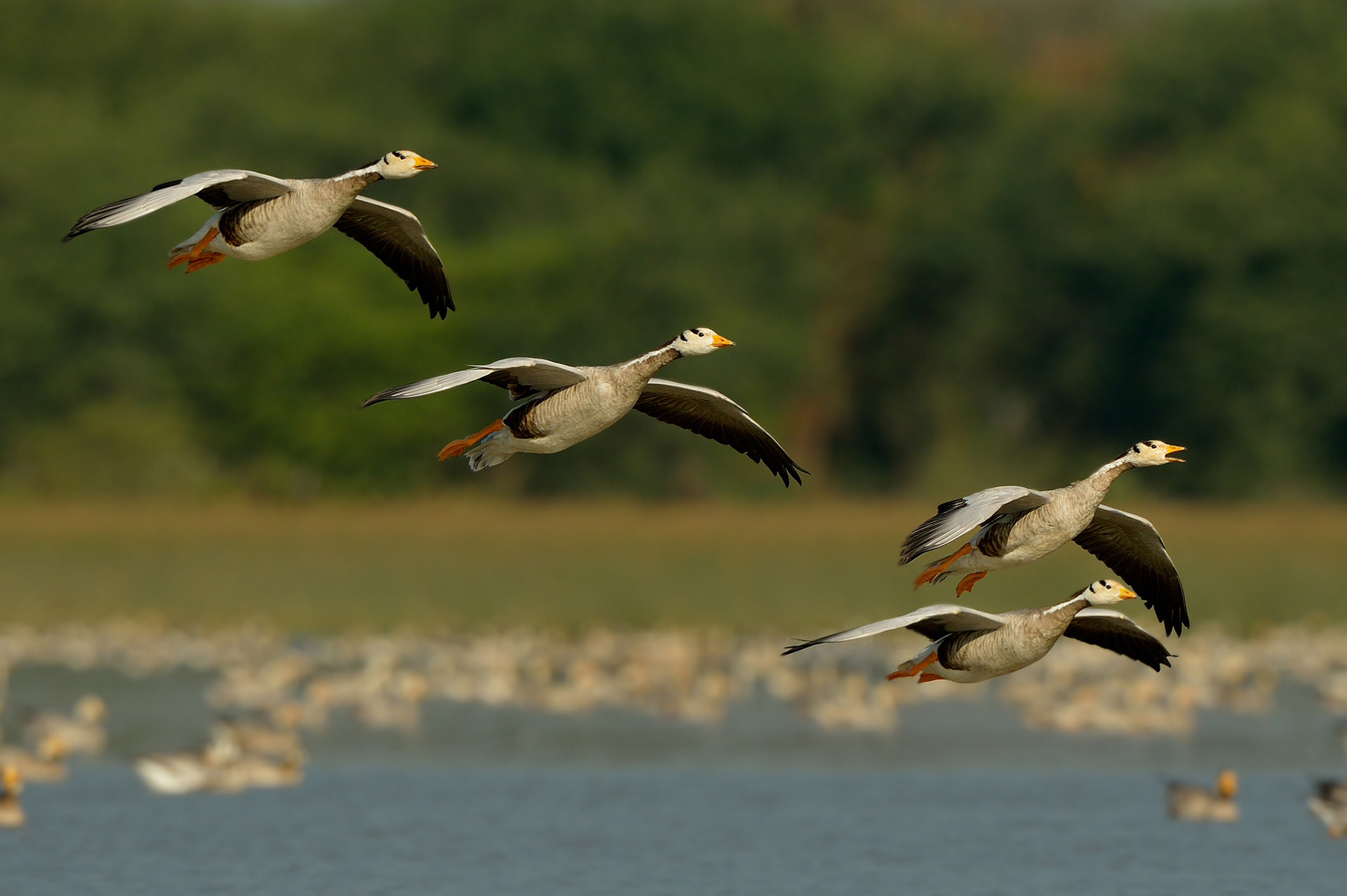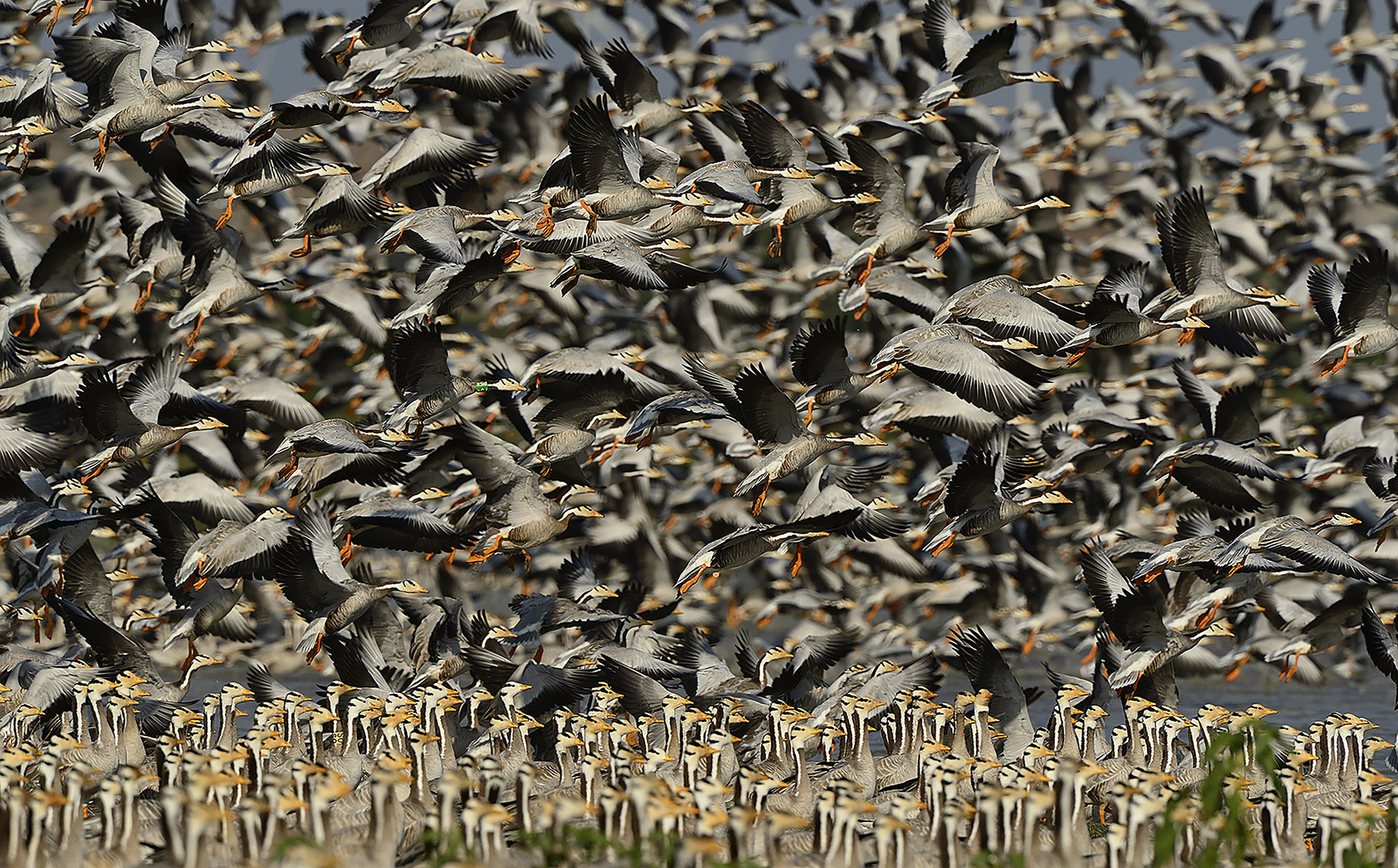During the months of November and December, photographers and avian enthusiasts in Karnataka look forward to documenting the arrival of a special bird. Found in large flocks in the backwaters of the KRS (Krishnaraja Sagar) Dam, Kabini Dam and the Hadinaru Lake, among other water bodies in the Mysuru, Mandya and Chamarajanagar districts of the state, the migration pattern of this bird is considered nothing short of a scientific marvel. But like several other natural phenomena, the bird's migration is also being impacted by the changing temperatures and seasons making it imperative that we pay attention to their populations and their habitats. On World Migratory Bird Day, we shine a light on the Bar-headed Goose (Anser indicus) and share a few essential facts to encourage conversations about its conservation. But before we get into that, here is a quick rundown about the day itself.
A global outreach initiative to highlight the importance of migratory birds, World Migratory Bird Day aims to build greater awareness about birds and their seasonal journeys. Traversing long distances and adapting to various geographies, migratory birds tell us a lot about the state of the environment and the climate. While their breeding and wintering habitats need to be protected, it is also essential that we gain an understanding of their migratory behaviours and the dangers that they face en route. The World Migratory Bird Day 2022 brings to focus one such threat—light pollution. According to the initiative, artificial light not only impacts the birds when they fly at night, it also affects their internal clocks and interferes with their migratory behaviours.
We have just about begun to understand the enormity of issues that migratory birds face. It is now time to act on these issues and build comprehensive solutions to protect the birds and help them embark on safe journeys. Over to the Bar-headed Goose now!
One Handsome Goose!
Identified by their signature white and grey plumage with distinct black lines on the head and neck and their orange-yellow bill and legs, Bar-headed Geese are handsome members of the Anser family. During flight, these birds appear to have all-grey plumage with black wingtips. The wingspan of the bird ranges from 140 to 160cm. Although male and female birds appear similar, the male bird is slightly larger than the female.
Central Asia <> South Asia
Native to central Asia, where the species breeds, Bar-headed Geese are found in countries like India, Pakistan, Nepal, Kazakhstan, Bangladesh, Myanmar, Japan and other nearby regions. They migrate to parts of South Asia during winters. Bar-headed Geese reside near water bodies, preferring high-altitude lakes during the breeding season and freshwater lakes, rivers and streams in their wintering habitats. They are also found in rocky regions, farmlands and marshes. In India, their geographical range extends from the northeast to the southern parts of the country.
Grasses, Grains and Roots
The diet of Bar-headed Geese mainly consists of grasses. They are often observed foraging for aquatic plants near rivers and lakes. They also feed on tubers, grains, nuts and roots. The bird occasionally hunts for insects, small fish and crustaceans.
A Mate For Life
Bar-headed Geese usually form monogamous pairs and are seasonal breeders. When the female population outranks the males, mated pairs are joined by secondary females. Nests are built close to water bodies by both sexes. Females lay anywhere between three to eight eggs and the incubation period lasts about a month. Goslings are known to leave their nests in 55-60 days. They have dull coloured plumage compared to the adults.
You may also like to read
Muscles and Metabolism
Every year during winter, Bar-headed Geese take on a long, arduous journey from Central Asia to parts of India and its neighbouring countries. During their flight, they glide over the mighty Himalayas, flying at seven thousand metres above sea level! Their body has been built to sustain these long journeys. For example, Bar-headed Geese have more capillaries in their pectoral muscles. They are also known to reduce their energy metabolism and alter the way they fly to ensure energy conservation. They are among the highest-flying birds in the world. In 1953, a mountain climber even claimed to have seen a Bar-headed Goose flying over Mount Everest—the highest mountain above sea level.
The Beloved Geese of Gadag
Bar-headed Geese are designated as Least Concern by the IUCN Red List with a decreasing population trend. The birds face a range of threats that include degradation of wetlands, pollution of water bodies, and conversion for agricultural and industrial purposes. Other threats include egg collection and retaliatory killing by farming communities in response to crop damage. But there are also positive examples of conservation of the high-flying bird. For example, thousands of Bar-headed Geese congregate in a village in Gadag, Karnataka, where the villagers document their arrival and ensure that the birds are left undisturbed.
Fun Facts
- Bar-headed Geese have a special kind of haemoglobin in their blood that enables faster oxygen absorption, aiding them in long flights.
- The bird can cover distances of more than 1600km in one day!
- While flying, large flocks maintain a V-like shape to communicate with each other.
- Their orangey-yellow beak and legs and the black bars on their head and neck are distinguishing features compared to the other grey birds in the Anser family.









